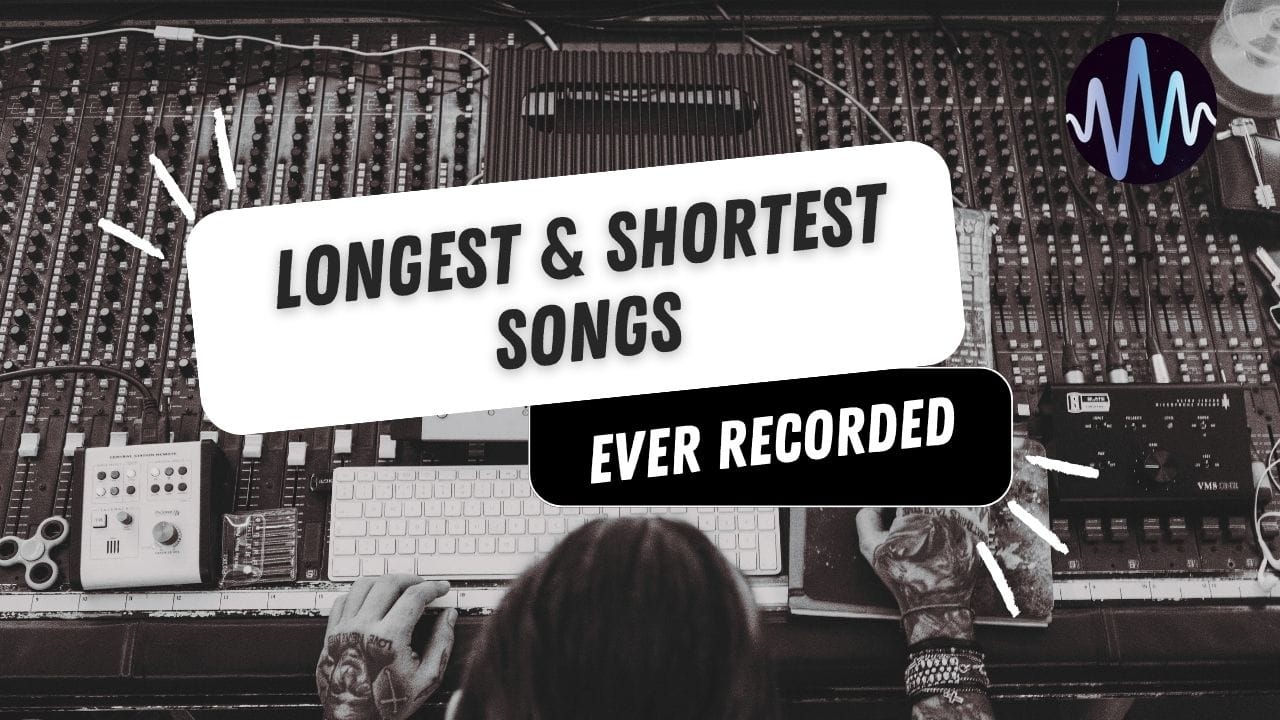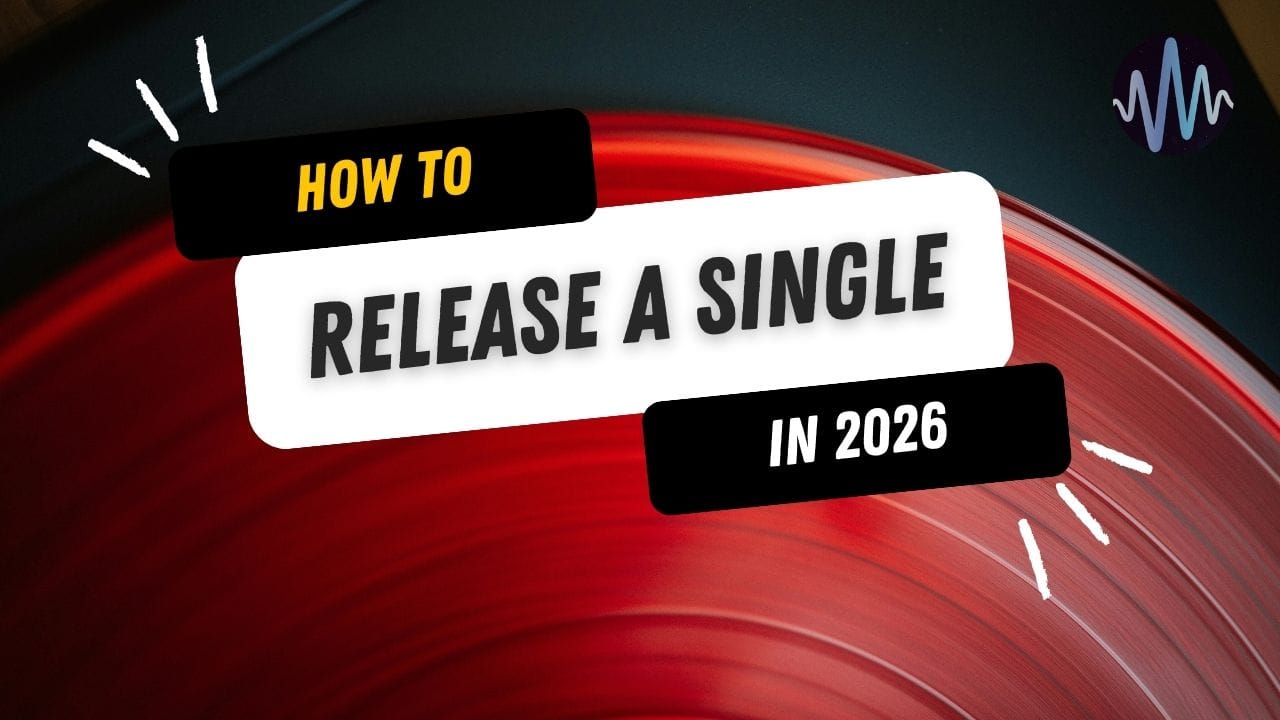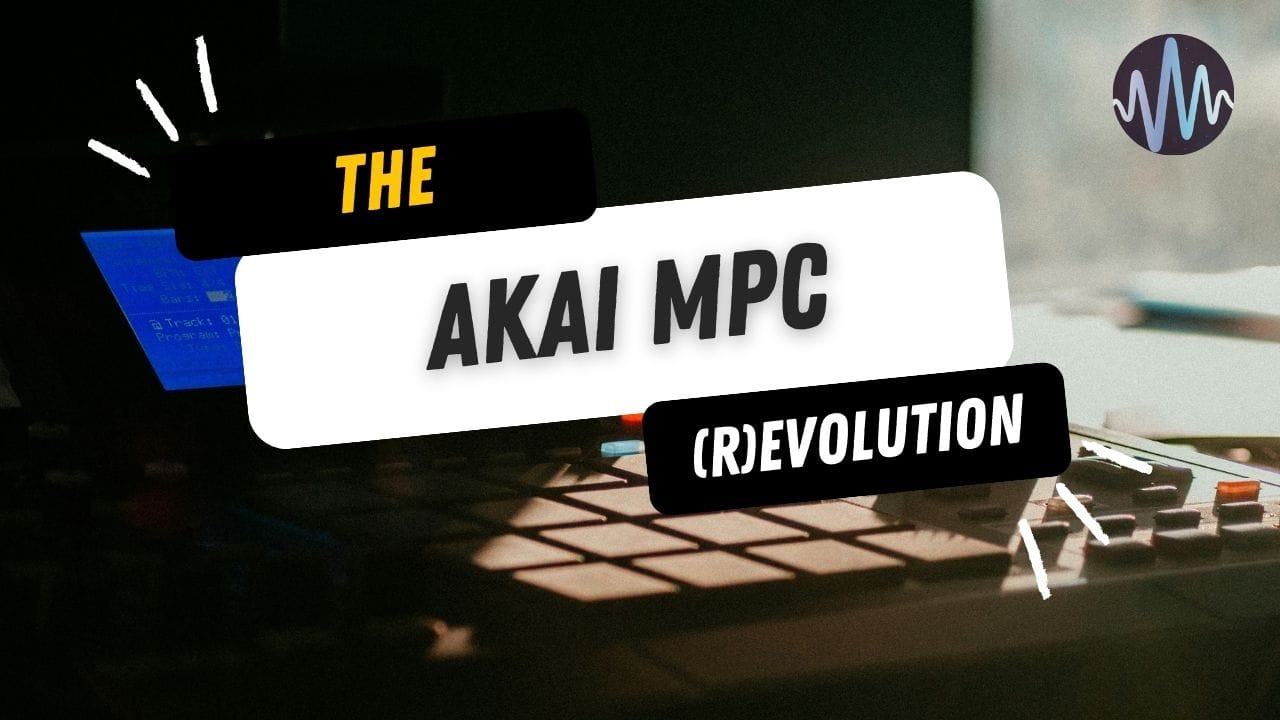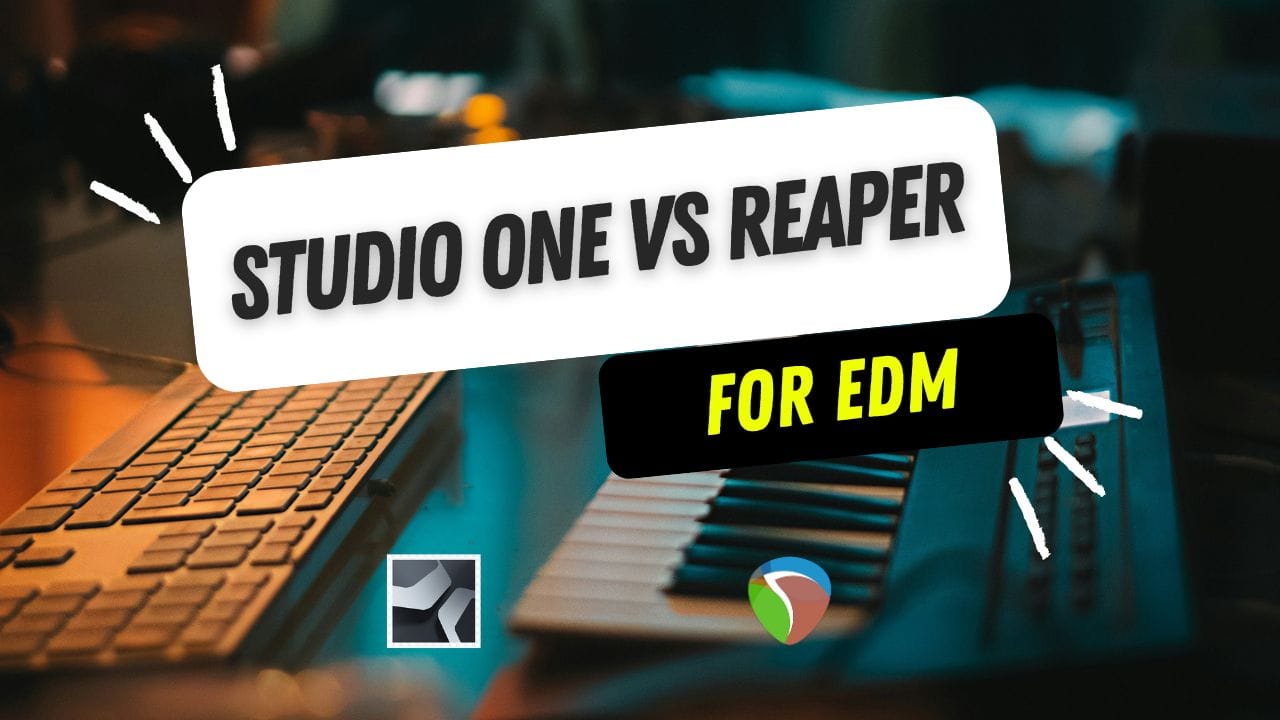
Musicians have always pushed boundaries, but some take it to ridiculous extremes when it comes to song length.
You know how most songs feel like they're roughly the same length? There's actually a reason for that, and it has less to do with what sounds good and more to do with old vinyl records and radio programming.
But some artists go the other way. They’ve either crammed everything into a few seconds or decide one idea deserves an entire afternoon to unfold properly.
There’s no right or wrong. The extremes show us just how arbitrary our expectations about song length really are.
Without further ado, let's investigate.
How Technology Influenced Song Length
Think back to the classical period – music could go on for hours without anyone batting an eye. Bach's St. Matthew Passion clocks in at over three hours long, and audiences would sit through the whole thing. Opera performances regularly lasted entire evenings.
Then recording technology arrived, and suddenly every song had to fit specific time constraints. Early 78 RPM records could only hold a few minutes per side, so musicians had to compress their ideas or risk terrible sound quality.
So, you can’t entirely blame commercialisation for the 3-4 minute song default!
Here’s a brief run-down of how song length has changed over the 20th and 21st centuries:
- The Vinyl Years (1900s-1940s): Early 78 RPM records could hold roughly 3-5 minutes per side. This wasn't a creative choice – it was physics. Engineers discovered that longer recordings required tighter groove spacing, which meant quieter playback and more surface noise. The time limit was real.
- Tape Opens Possibilities (1940s-1960s): Recording tape removed the physical time constraints that vinyl imposed. Musicians could theoretically record for hours without switching sides or losing quality. But radio stations still preferred shorter songs for easier programming, and the 3-minute expectation was already burned into everyone's habits.
- The 45 RPM Era (1949-1980s): The 45 RPM single reinforced those time limits with better sound quality. Radio stations loved this format because shorter songs meant more commercial breaks. Music royalties were paid per song, not per duration, so record producers had every incentive to make more songs, not longer ones.
- The CD Liberation (1980s-1990s): Suddenly, CDs could hold around 80 minutes of music, and song lengths exploded. The average hit song peaked at 4 minutes and 21 seconds in 1992. Artists went wild with extended mixes, longer solos, and ambitious concept pieces they'd never been able to fit on vinyl.
- The Digital and Streaming Era (2000s-Present): Despite having unlimited digital storage, songs are actually getting shorter again: the average Billboard hit has shrunk to 3 minutes and 30 seconds and falling. Streaming services pay the same royalty whether a song is 3 minutes or 10 minutes long, but shorter songs get replayed more often. Spotify's 30-second rule means artists need to hook listeners immediately or lose the stream count entirely.
The result? 20% of Grammy-nominated songs in 2024 clocked in under three minutes. We've come full circle, but this time it's algorithms setting the limits instead of physics. Factor in shortening attention spans and the era of short-form socials, and people are listening to shorter fragments of music. Some viral music clips go viral based on just a few lyrics.
With all of that said, there are competing tensions at play here. In electronic music, particularly in genres such as DnB, trance, and techno, songs are not dramatically shortened. That’s because you need space for DJs to mix in and out. Too short = too much time pressure.
Even so, song lengths are generally settling below the 5-minute mark in the vast, vast majority of cases.
The Shortest to Longest Songs Ever Recorded
Ready to meet the actual songs that make absolutely no sense when it comes to duration?
These tracks range from "wait, did that actually play?" to "is this thing ever going to end?" – from 1.316 seconds to 1000 years!
The Microsongs: Under 3 Minutes
Napalm Death – "You Suffer" (1.316 seconds)
The undisputed champion of sonic brevity. Napalm Death's grindcore masterpiece holds the Guinness World Record for shortest song ever recorded, and the entire lyrical content is just four words: "You suffer, but why?"
The band wrote it as a joke during a 1986 demo session, but the track ended up influencing an entire micro-genre called "noisecore." Bands like Sore Throat and A*** C*** built entire albums around super-short songs, which is now a grindcore tradition.
Justin Broadrick, one of the writers, later admitted: "It was largely a comedy thing... it's ridiculous, but it was hilarious."
The live version is a great watch.
Minor Threat – "I Don't Wanna Hear It" (1:36)
Ian MacKaye's hardcore pioneers demonstrated that political fury doesn't need extended explanations. The entire straight edge manifesto compressed into 96 seconds of pure aggression.
The White Stripes – "Fell in Love with a Girl" (1:50)
Jack White compressed an entire relationship into under two minutes, creating one of the defining anthems of the garage rock revival. The song feels much longer than it actually is because every second is loaded with purpose. No wasted space, no filler.
Daft Punk – "Nightvision" (1:45)
An ambient interlude from Daft Punk's Discovery album, "Nightvision" shows that even dance music's biggest names understood the power of brevity. At just 1 minute and 45 seconds, this ethereal track serves as a palate cleanser between the album's upbeat anthems.
The Buzzcocks – "Breakdown" (1:52)
Manchester punk at its most efficient. Pete Shelley managed to cram melody, hooks, and emotional devastation into less than two minutes, proving that punk could be both fast and catchy.
Aphex Twin – "Z Twig" (2:00)
From Richard D. James's ambient masterpiece Selected Ambient Works Volume II, "Z Twig" is described as one of the shortest tracks on the album, yet it demonstrates how a repetitive melody can create something utterly beautiful in minimal time. It's electronic minimalism at its most effective.
AFX – "Laricheard" (2:10)
A tribute to Chicago house pioneer Larry Heard, this track from the Analord series packs incredible depth into just over two minutes. With acid bass, throbbing kicks, and unhurried melodies, it proves that electronic music can be both concise and emotionally rich.
The Ramones – "I Don't Wanna Go Down to the Basement" (2:35)
The Ramones proved that punk rock's power came from compression, not expansion. Ironically, this track is actually the longest song on their debut album at 2 minutes and 35 seconds. Most other tracks on the album, like "Blitzkrieg Bop" and "Beat on the Brat," clock in closer to two minutes or less.
The Epics: When Musicians Lost All Sense of Time
Led Zeppelin – "Stairway to Heaven" (8:02)
The gateway drug to long songs. Most radio stations play the full version despite its length, proving that exceptional songwriting can overcome format restrictions. The track builds from acoustic fingerpicking to thunderous rock climax across its eight minutes.
The Doors – "The End" (11:42)
Jim Morrison's Oedipal nightmare sprawls across nearly 12 minutes of psychedelic terror.
What started as a simple breakup song evolved into something much darker through months of refinement in live performances.
deadmau5 – "Strobe" (10:37)
Joel Zimmerman initially didn't want to release this track, feeling it wasn't good enough. His tour manager had to persistently convince him to include it on the album.
The reluctance paid off. "Strobe" became deadmau5's most beloved masterpiece, with the original 10-minute version garnering far more streams than its radio edit. The track even spawned extended live versions reaching 20 minutes.
Underworld – "Born Slippy .NUXX" (Extended Mix) (11:37)
The Trainspotting anthem gets the full club treatment in its extended version, stretching the 9-minute original into nearly 12 minutes of euphoric build-ups and breakdowns.
Iron Maiden – "Rime of the Ancient Mariner" (13:45)
Maiden took Samuel Taylor Coleridge's poem and turned it into a metal masterpiece that actually justifies its length.
The song has distinct movements, tempo changes, and enough narrative content to fill a short film. Iron Maiden always did storytelling well.
Genesis – "Supper's Ready" (22:58)
Peter Gabriel-era Genesis at their most ambitious. This song cycle tells a complete apocalyptic story across multiple musical movements, from quiet pastoral sections to full-blown rock opera drama.
Yes – "Close to the Edge" (18:42)
Prog rock perfection across three distinct movements. The song demonstrates how extended compositions can maintain listener interest through constant musical evolution, rather than relying on simple repetition.
Pink Floyd – "Shine On You Crazy Diamond" (all parts) (26:01)
Floyd's tribute to former bandmate Syd Barrett sprawls across multiple album sides and takes its time with every emotional beat.
It’s typical Floyd – quiet acoustic passages give way to screaming guitar solos, synthesizer textures morph into orchestral arrangements. It's more of a journey than a song.
Mike Oldfield – "Tubular Bells Part One" (25:31)
The album that launched Virgin Records is essentially one continuous composition. Oldfield played nearly every instrument himself, creating layers of sound that build and evolve across the entire side of the vinyl.
Kraftwerk – "Autobahn" (22:32)
The German electronic pioneers created a sonic road trip that mimics the experience of driving on the highway. The repetitive elements and gradual changes were designed to mirror the hypnotic nature of long-distance travel.
Jethro Tull – "Thick As A Brick" (part 1 and 2 were split over two sides of an LP) (43:46)
The longest popular rock song ever recorded takes up an entire album. Ian Anderson created it as a parody of prog rock concept albums, which makes it even more impressive that it actually works as a listening experience. The song flows through multiple themes and musical ideas without ever feeling repetitive or indulgent.
Sleep – "Dopesmoker" (63:32)
The doom metal holy grail. This single track about traveling through the desert in search of weed somehow sustains interest for over an hour through sheer hypnotic repetition and crushing heaviness.
PC III – "The Rise and Fall of Bossanova" (13 hours, 23 minutes)
Things start getting weird when you hit the double-digit hours. This experimental piece held the Guinness World Record for the longest officially released song from 2016 to 2020. It’s essentially an ambient piece and is quite relaxing to listen to.
The Flaming Lips – "7 Skies H3" (24 hours)
Wayne Coyne's attempt to create a 24-hour song resulted in this experimental marathon. The band recorded it in segments ranging from 25 minutes to 7 hours, then compiled everything into one continuous piece.
Bull of Heaven – "Like a Wall in Which an Insect Lives and Gnaws" (5 years, 258 days)
The experimental duo Clayton Counts and Neil Keener created what might be the most extreme composition ever attempted.
At over five years of continuous audio, this track represents the absolute outer limit of what could technically be called a "song."
Dr. Jagadeesh Pillai – "Shri Ramcharitmanas" (138 hours, 41 minutes, 20 seconds)
The current Guinness World Record holder for longest officially released song. Dr. Pillai, a scholar from India, spent four years recording this epic poem set to music.
It's essentially a sung version of a 16th-century religious text, complete with over 15,000 verses. The dedication is impressive, even if the listening experience is more marathon than sprint.
Jem Finer – "Long Player" (1000 years)
The ultimate extreme. Long Player began playing on December 31, 1999, and is designed to run for exactly 1000 years without repetition.
It's not really a song in any conventional sense – more like a sound art installation that happens to outlast civilizations. Whether it's still playing in the year 3000 might depend on how well we maintain the equipment.
What These Extremes Teach Us
So, what do we learn from all this?
First, musicians have always found ways to work with whatever limitations they face.
Sometimes that means cramming everything into 1.3 seconds, sometimes it means stretching a single idea across years. Both can work.
Each extreme has its fans. Nobody forgets "You Suffer" once they've heard it, and prog fans still argue about which 20-minute epic is the greatest. There's something to be said for completely committing to an idea, even if it seems ridiculous.
For your own music, it mostly comes down to serving the song. Some ideas work best as quick hits, others need room to breathe and develop. The technology might push you in certain directions, but the best tracks usually find their own natural length.
Ready to experiment? Sample Focus offers thousands of professionally crafted samples perfect for any project length.
Whether you're building quick viral moments or extended musical journeys, our collection gives you the building blocks to create tracks that hit exactly the right duration!





Comments